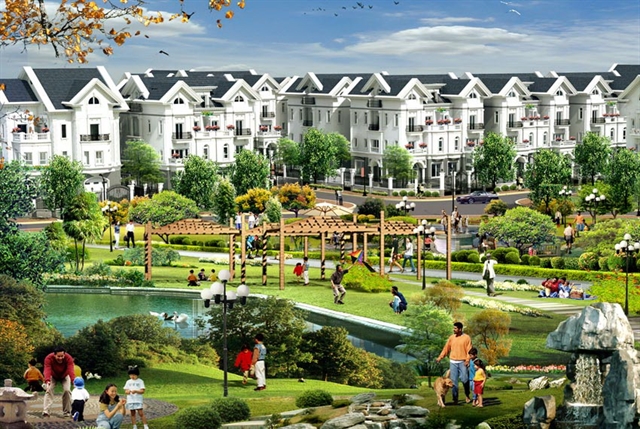 Society
Society

Property experts have urged HCM City to issue a special policy on new urban areas and residential complexes to prevent the rampant and unsustainable development of residential projects.

|
| A new urban area project in Gò Vấp District in HCM City. — Photo courtesy of the project developer |
HCM CITY — Property experts have urged HCM City to issue a special policy on new urban residential complexes to prevent the rampant and unsustainable development of residential projects.
The policy should address site clearance and the issuance of construction licences, they said.
More than 20 years ago, Phú Mỹ Hưng became the first model of a New Urban Zone in the city. Located in District 7, it covers more than 300ha, including condos, houses, villas, shopping malls, schools and hospitals.
Since then, Phú Mỹ Hưng has been one of the city’s most celebrated new urban areas. The residential complex is known as one of the most exclusive residential and commercial zones in the city and the entire country.
More than 30,000 people live and work in the area, half of whom are foreigners.
After the success story of Phú Mỹ Hưng, HCM City continued to develop other new projects such as the Sala new urban residential complex in District 2 and Him Lam in District 7.
In the city’s eastern part, the Vạn Phúc City new urban residential complex was developed in Thủ Đức District. Covering 198ha, Vạn Phúc City includes villas, houses, shophouses, entertainment areas, parks, hospitals and international schools.
Nguyễn Hương, general director of Đại Phúc Land, said that new urban residential complexes could become a sustainable model for the city’s planning and development.
These kind of projects are developed over a period of time in several phases, with the overall aim of creating modern residential areas with many amenities and higher property values, developers said.
At a recent conference on property investment in HCM City, Nguyễn Thành Phong, chairman of the city People’s Committee, said the city would develop large-scale new urban residential projects. “These projects will improve the quality of life for residents and help develop a smart city,” he said.
However, developers continue to build projects, mostly condos, on small areas of land without consistent and sustainable planning, according to Phong.
Delayed projects
The city has approved many new urban residential complex projects, but most of them are still on paper, except for a handful of projects such as Vạn Phúc City and Vin City.
In 2010, the city’s People’s Committee asked Hóc Môn District People’s Committee to speed up a project to develop An Phú Hưng new urban residential complex covering 700ha, with the aim of making it the city’s second "Phú Mỹ Hưng-like" new urban zone.
However, the project has never been implemented due to a lack of investment.
Another project, the Sing Việt new urban residential complex in Bình Chánh District, covering 331ha with a cost of VNĐ1.939 trillion (US$84.3 million), has been planned for 20 years, but has not started for the same reason.
Other delayed projects include Bình Quới-Thanh Đa and Thủ Thiêm in District 2.
Ngô Quang Phúc, general director of Phú Đông Real Estate Group JSC, said the concept of new urban residential complexes is common in more developed countries.
He said that HCM City should provide incentives for property developers to start such projects throughout the city, especially in suburban areas, to ensure that residents have easy access to pubic services such as health care, education and roads.
According to experts, new urban residential complexes, designed by architects and constructed by real estate developers working with the city and central governments, would help improve residents' quality of life and access to public services. — VNS




